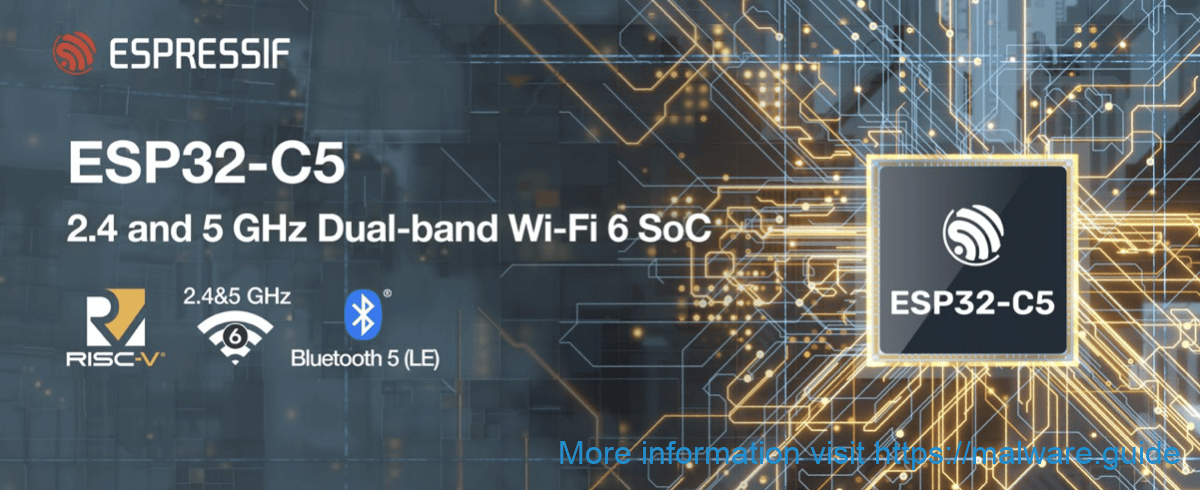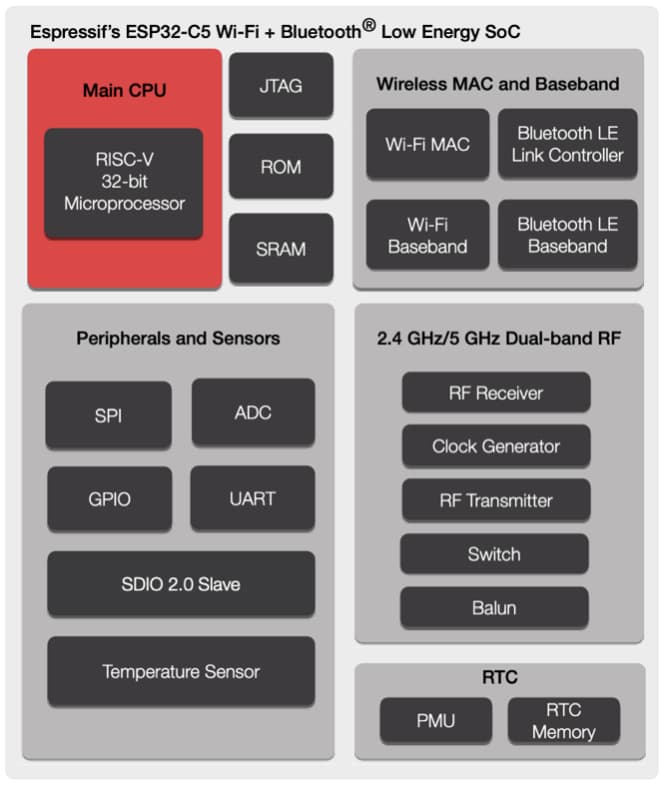Devices for the Internet of Things (IoT) and smart home applications are often equipped with older Wi-Fi technology. Some devices even work (exclusively) over the 2.4 GHz band and have problems with 5 GHz. Espressif is now introducing its first SoC for IoT with Wi-Fi 6.
For IoT and smart home, the connection speeds do not necessarily have to be high, for example a motion sensor only needs to send small amounts of data. The emphasis in many of these applications is rather on low energy consumption.
New and faster Wi-Fi standards such as Wi-Fi 6 therefore do not immediately find their way to IoT devices and chips. But Wi-Fi 6 brings benefits other than just more speed, and Espressif’s new SoC has more to offer.

First IoT chip with Wi-Fi 6
Espressif Systems, the manufacturer known for its microcontrollers popular in the Internet-of-Things, has announced its first dual-band-capable IoT chip with the latest Wi-Fi 6:
- The ESP32-C5
The ESP32-C5 uses the two currently important Wi-Fi radio bands 2.4 and 5 GHz. The 6GHz band of Wi-Fi 6E is not supported.
If you’ve ever tried to pair a smarthome device to your router that only works over 2.4GHz, you know how frustrating that can be. Usually the manual of such devices warns that only 2.4 GHz works, otherwise the pairing will always fail.
Easier pairing
For 2.4 GHz-only IoT devices, you need to temporarily disable 5 GHz on the Wi-Fi router and enable it again after pairing. Sometimes a router doesn’t even offer that option, and at the most you can try pairing the device at the edge of your Wi-Fi coverage (because 5 GHz can’t reach as far through walls or other obstacles than 2.4 GHz).
If IoT devices do offer 2.4 and 5 GHz dual-band support, pairing will become a lot easier for users.
ESP32-C5 – other features
The ESP32-C5 from Espressif also has a 32-bit RISC-V core that can be clocked up to 240 megahertz. In addition, there are 400 KByte SRAM and 384 KByte ROM.
For the periphery there are twenty GPIO pins and an SDIO 2.0 interface.
Bluetooth 5 LE is also on board as an additional wireless interface.

Wi-Fi 6 for Internet of Things and smart home
Wi-Fi 6 (IEEE 802.11ax) like the ESP-C32 offers is more suitable for IoT applications than the previous generations because of the fine-tuned transmission methods. Just like higher (achievable) speeds, these are part of the standard. The lower latency is also a plus for smarthome and IoT.
In the ESP32-C5, Wi-Fi 6 is limited to a signal width of 20MHz. As a result, the speeds are lower, but for IoT and smarthome it is more important that the chip focuses on efficiency than on speed.